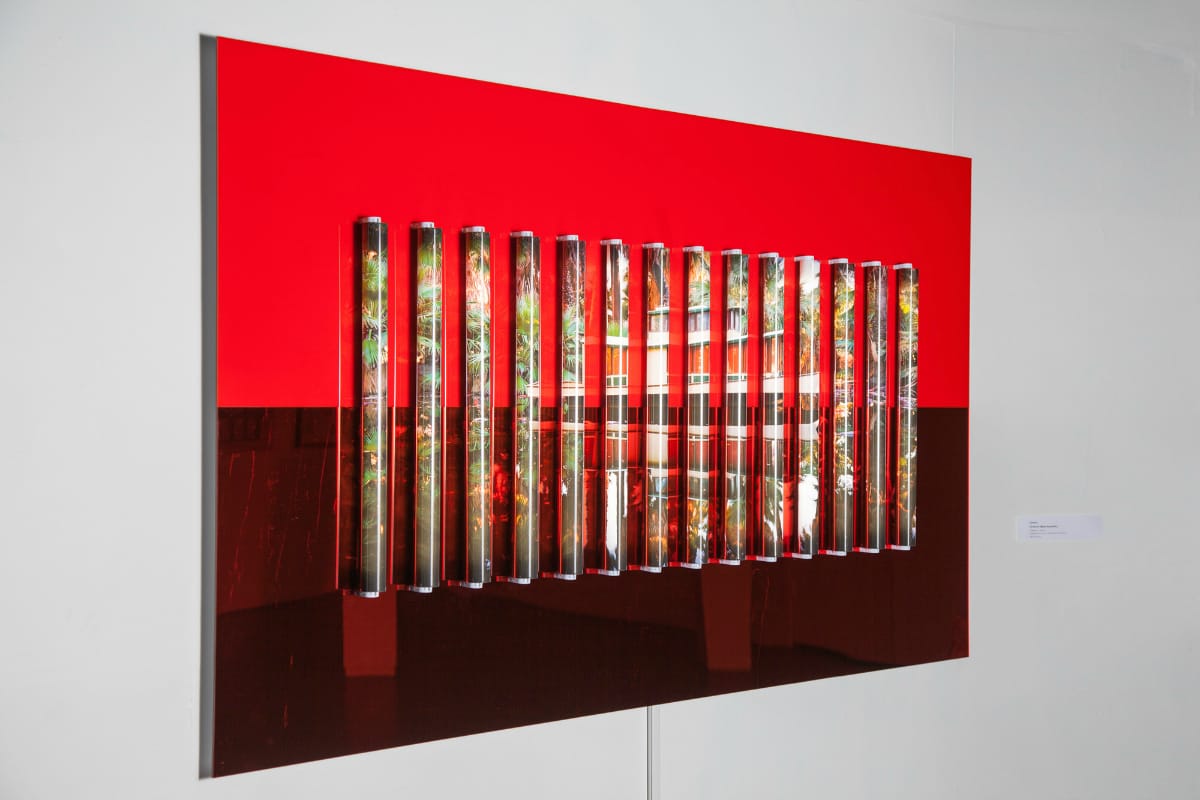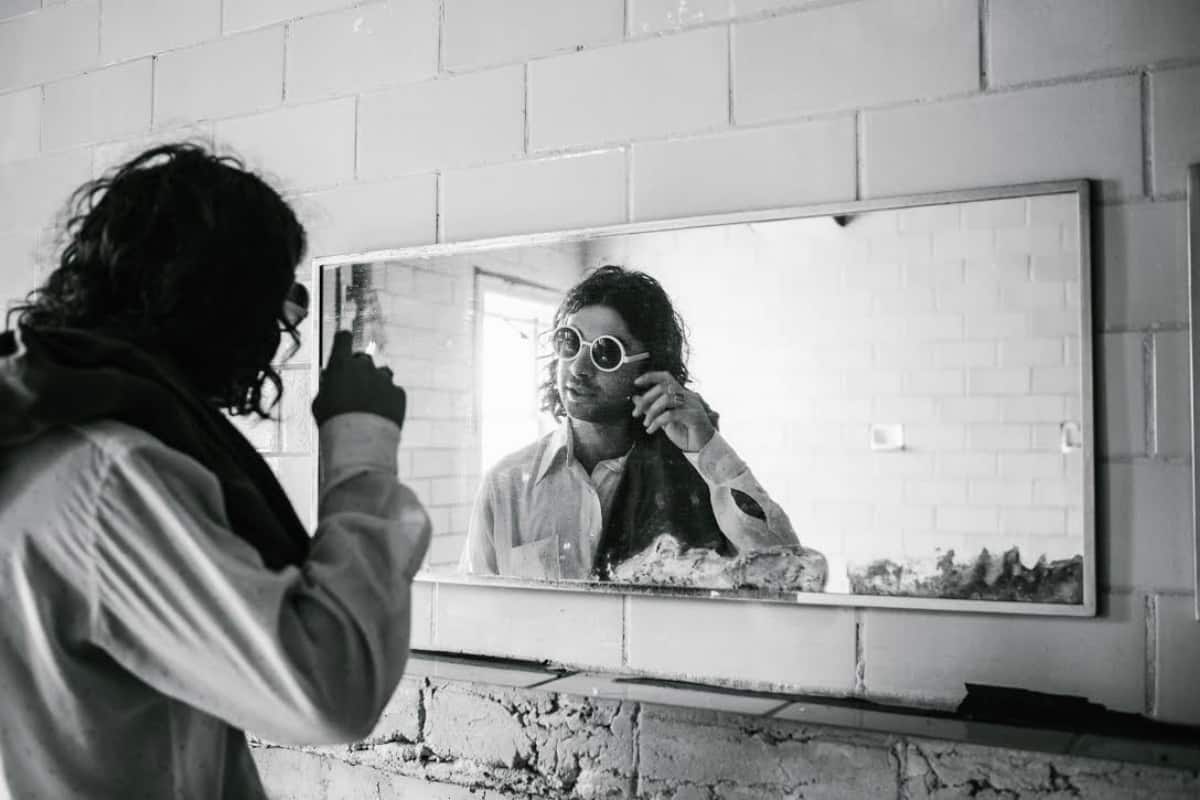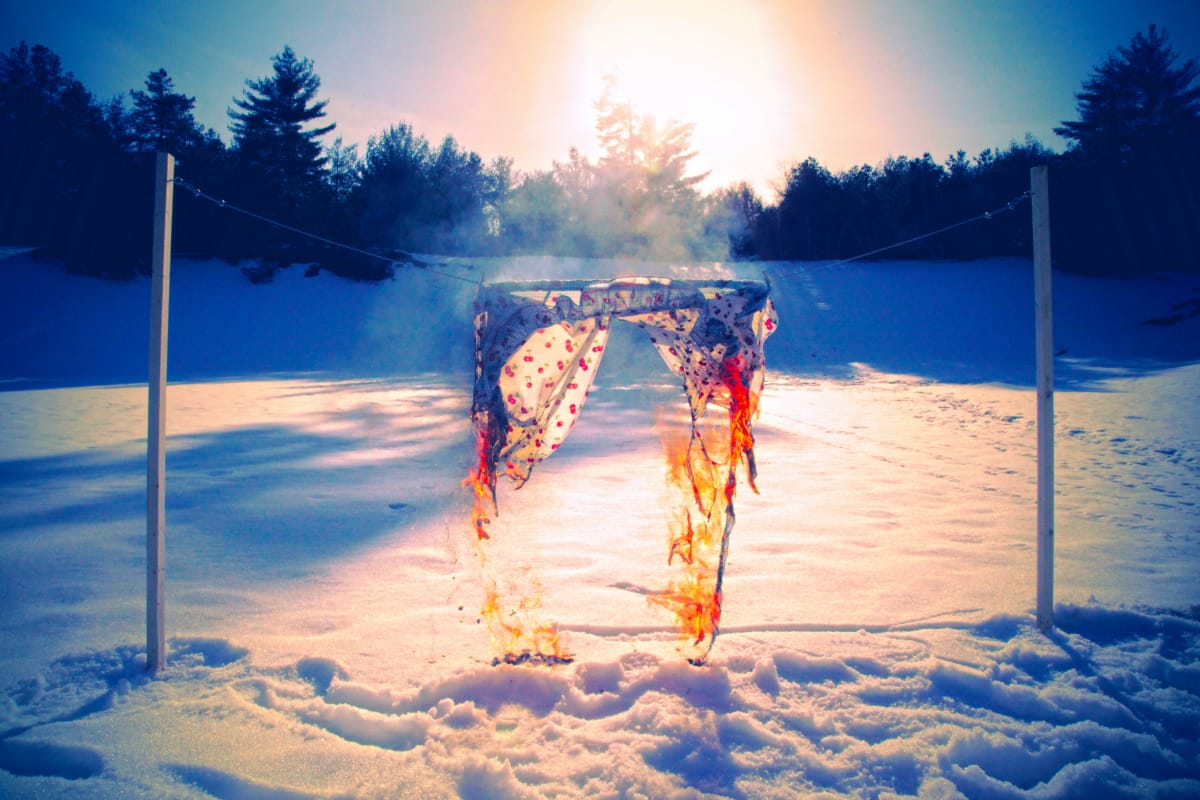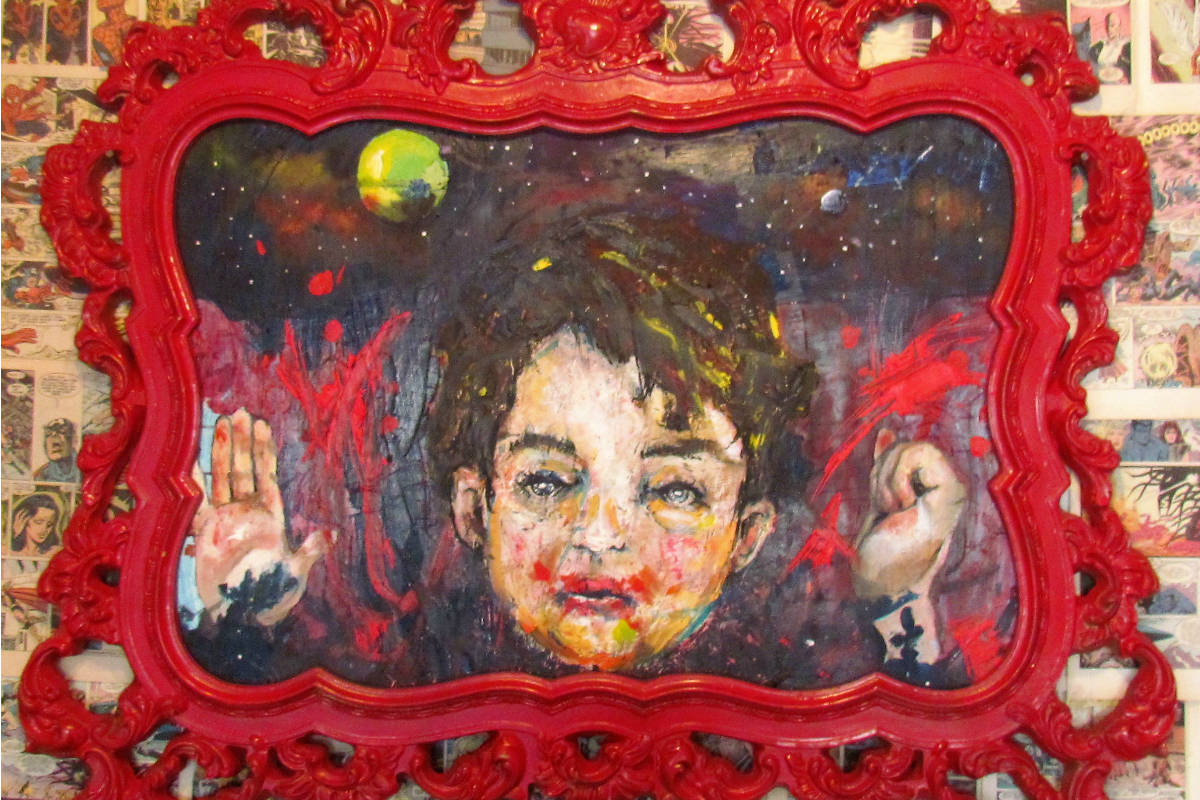Massachusetts artist Clint Baclawski inverts the idea of a billboard, using light boxes and photography.
Clint Baclawski makes billboards, but he is not trying to sell you anything. With a background in advertising photography, he has a keen eye for its aesthetic, but his images are sculptural photographs rather than pushes for product. “There’s no better billboard than art, and these images are displayed as such without something to advertise,” Clint says.
After six years of practicing traditional photographic methods, Clint had the notion in 2006 to get the photograph off the wall, and so he did, transferring the images into light boxes, double-sided and free standing, lit from within with fluorescent bulbs. He was taking photographs and inverting them, flipping text, asking the viewer to question how the photograph was taken. His images dealt with commercialism, but some muddled aspect of it. A Walk in the Park, for one, represents The Macy’s Day Parade, but a small crowd from the night before.
Baclawski’s concept started evolving while he was constructing a light box during graduate school at MassArt. A print fell onto a fluorescent bulb and draped itself over the long tube of light and voila! He created Chromogenic, a composite of LED tubes separated and laid out on a wall, each wrapped with a section of a photograph—an abstracted landscape fading from bright greens to blues. The effect is disorienting in a way; the image is obscured and then clarified as you move around its parts, an effect that goes for his body of disembodied billboards.
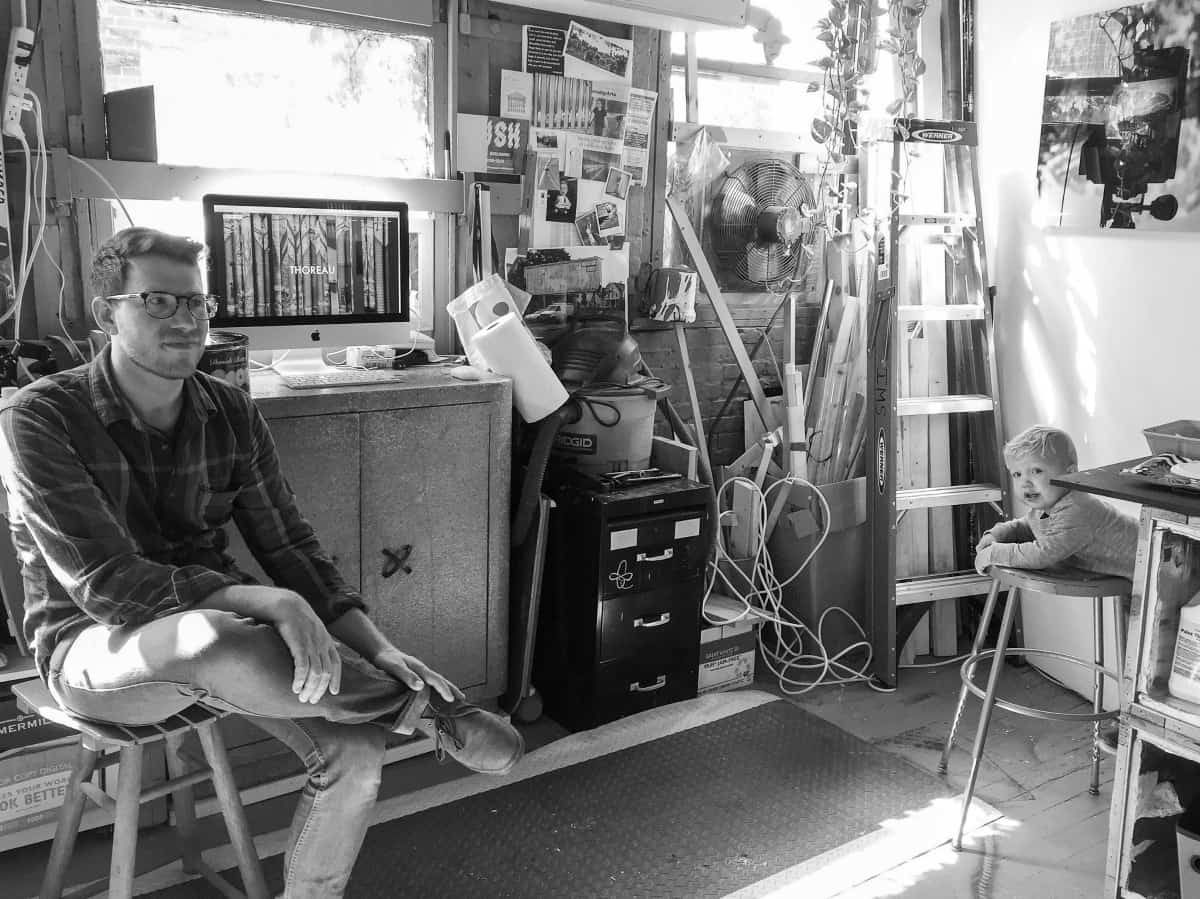
As he moved from light boxes to more complex photographic sculpture, Baclawksi changed his subject matter changed dramatically. “No longer did I need the imagery to be dense and complex, full of crowds and tension,” he says. “I went very simplistic.” Using the structure of his work itself to stir the viewer, he layers lights on mirrors, representing simple images with complex modalities and concepts.
“There’s beginning to be two distinct bodies within the light bulbs,” Baclawski says. His nature images exist on pure color Plexiglas, but he is creating a distinct body of work on mirrored surfaces. “They’re all about places one would inhabit but devoid of people. My latest, Oasis, is a houseboat.”
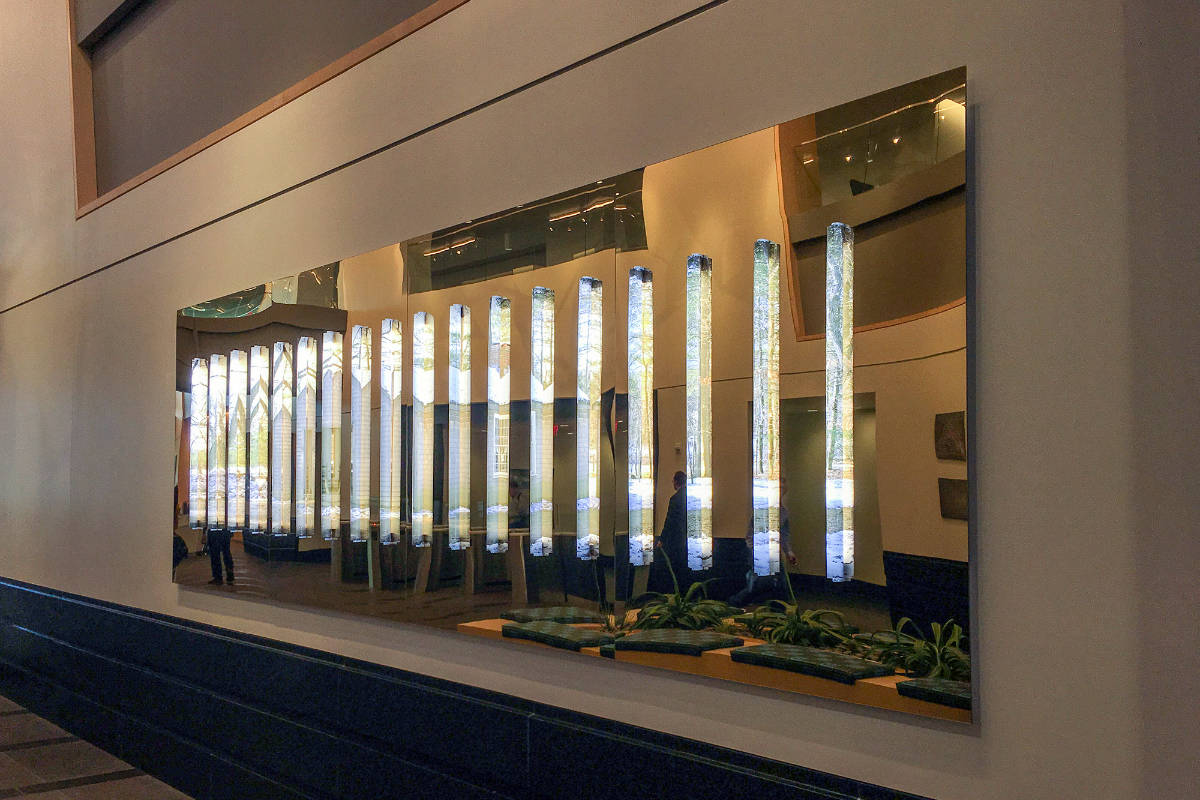
Thoreau, image courtesy of Clint Baclawski
Another piece, Thoreau, sits ironically in a corporate lobby on a gold background, a minimal and humble abode glowing on a gold background in a place surging with money. His works on mirrored surfaces, such as Thoreau, seem to expand in two directions. The mirror pushes into infinity, while the glowing bulbs emerge toward the viewer. As you witness the empty replica of Thoreau’s home, you witness yourself reflected back as well, occupying the home in a way. While Baclawski’s work plays with commercialism in the digital age, he still works with film and refuses to outsource work, making sure to be a part of his work in every aspect. He’s begun creating miniature versions of his work as well.
These days, Baclawski is working on his largest commission to date, utilizing eight-foot-long bulbs, and is preparing for HUBweek, Boston’s “festival for the future,” a weeklong event in October bringing innovators, scientists, artists, and thinkers together. He’ll be occupying a shipping container in Boston’s City Hall Plaza, where his viewer will be pulled into an indoor billboard of sorts, a consumer inside an ad without a product to consume, save the thought-provoking work itself.

